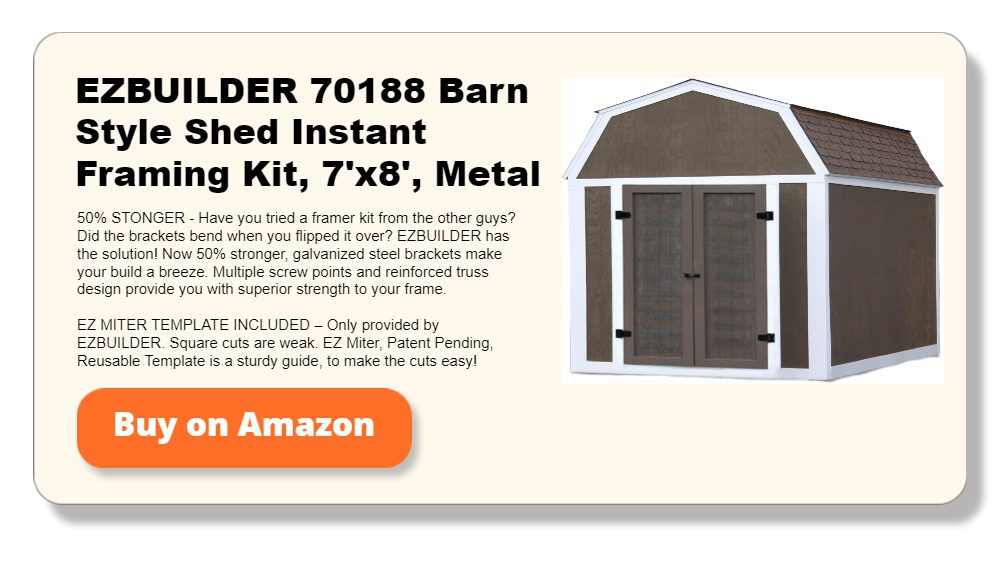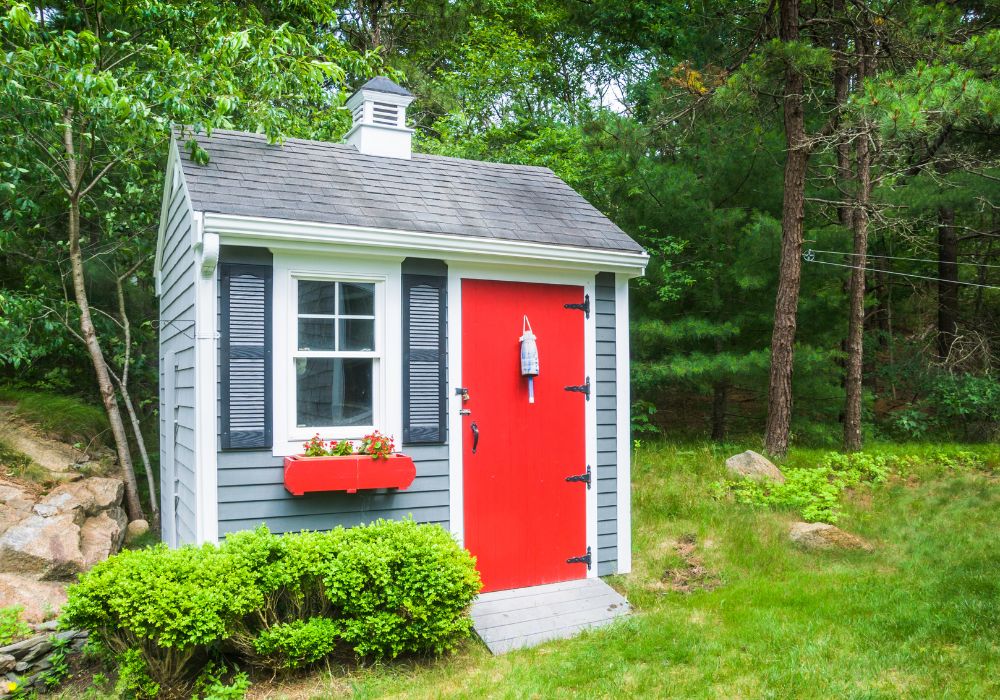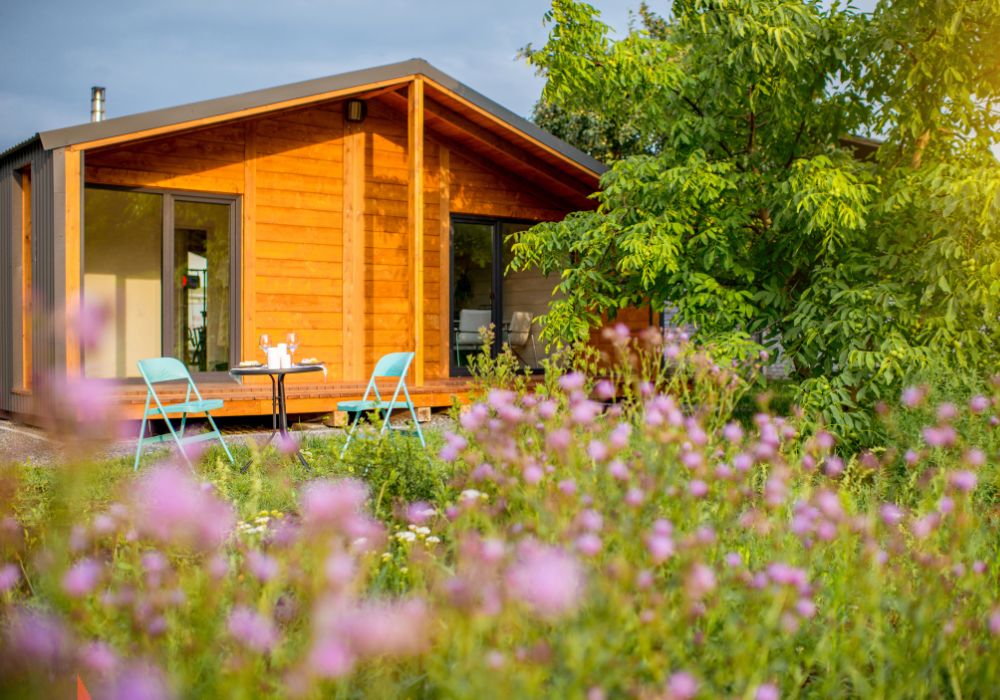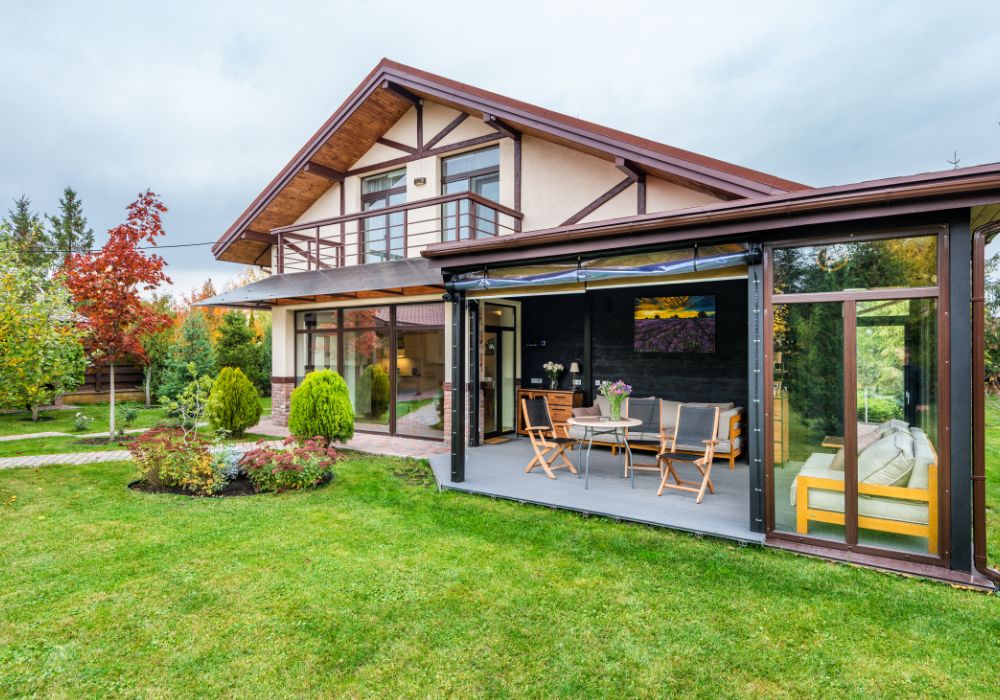Creating a backyard guest house turns empty outdoor space into an elegant and useful haven. Whether your vision is for a home office, a creative studio, or a comfortable guest area, the process from idea to execution calls for meticulous preparation and thoughtful designs.
This post will walk over how to realize your dream backyard guest house. These rules guarantee it satisfies your functional and aesthetic requirements and increases the value of your house.
Contents
Backyard Guest House Basics
A backyard guest house is a separate living area within your property but apart from the main house. Usually smaller in scale, these buildings provide the adaptability to fulfill different needs, such a creative studio, a private office, or visitor accommodation. Designed to accentuate your current house architecture, backyard guest houses can greatly increase the value and usefulness of your property by including all necessary conveniences.
Designing a backyard guest house aims to maximize the usability of your backyard while yet accommodating your particular needs by means of a flexible and appealing space. Whether the design process emphasizes merging aesthetics with practicality or offers a dedicated area for hobbies, a calm work environment, or a comfortable refuge for guests, Carefully designing your guest house will help you to strike a mix between comfort, style, and utility, so transforming a basic backyard into a useful extension of your house.
Understanding Zoning Laws and Building Regulations
Starting the building of your backyard guest house calls for a strong knowledge of local building rules and zoning laws. These guidelines guarantee that all constructions respect privacy, are environmentally conscious, and are safe. Here’s what you should know:
Local Zoning Laws
Zoning rules unique to different areas define what you are allowed to build on your land. These rules control elements including building height and size, their position in relation to the main house, and the extent of land available for construction occupation. See your local planning department to obtain the particular guidelines for your area before beginning your guest house’s design.
Building Permits
One of the most important aspects of building is obtaining building permits. These permits mean that your completed construction will be inspected to guarantee it satisfies all local building codes and that your building plans will be checked. Getting permits can save you from costly mistakes down the road and help prevent safety concerns.
Compliance with Building Codes
Setting the benchmark for building, codes are made to ensure every structure is safe and accessible. Everything from structural safety and fire prevention to electrical and plumbing systems depends on your guest house plans following these guidelines.
Environmental Regulations
These could have to do with noise management, wildlife preservation, or safeguarding of nearby water supplies. Such rules could affect the location of your guest house and the supplies you decide upon.
A seamless building process depends on one knowing and following these rules. If all seems daunting, think about consulting a professional, such as an architect or city planner, who can effectively negotiate these criteria.
Setting Goals and Budgeting
Creating your dream backyard guest house starts with clear goals and a well-planned budget. Understanding what you want to achieve and how much you can afford to spend are crucial steps that shape the entire project. Here’s how to approach setting your goals and establishing a budget for your backyard guest house:
Defining Your Goals
Consider what you want your backyard guest house to accomplish. Do you need extra space for guests, a quiet home office, or perhaps a creative studio? The purpose of the guest house will significantly influence its design, size, and the amenities you’ll need to include. Ensure your goals are clear as they will guide all other decisions in the project.
Estimating Costs
Once your goals are set, the next step is to determine the budget. Costs can vary widely based on factors such as materials, size, and custom features. Start by getting quotes from contractors or pricing out materials if you plan to DIY parts of the project. Don’t forget to include a buffer for unexpected expenses, which are common in construction projects.
Planning Your Budget
Having a cost estimate in hand, build a budget including all expected outlays. This covers building expenses, licenses, supplies, and any inside furniture or unique accents you want in your backyard guest house. Following this budget will help your project stay financially under control during building.
Consider Financing Options
Look at your financing choices if your budget falls short of covering all your costs. These might be loans, contractor payment schedules, or using house equity. Examine several financing options to identify one that fits your financial circumstances without overstretching your means.
Establishing reasonable objectives and a thorough budget will help you to make sure your backyard guest house satisfies your needs without going broke. This planning stage is absolutely essential for properly and quickly realizing your vision.
Choosing the Right Location
The functionality and harmony of your backyard guest house are affected by its location relative to your current house and surroundings. The site affects not only the building process but also the degree of performance of the new construction toward its intended use.
These important factors will enable you to decide on the appropriate site for your backyard guest house:
Assessing Your Backyard
Look closely at your backyard to find likely sites for the guest house. Think through elements including ground stability, drainage, and natural element exposure. Depending on the climate and inside temperature preferences, the ideal location is often level, well-drained, and gets the right amount of sunlight.
Considering Privacy and Accessibility
For the guests of the main house as well as for the residents, privacy is vital. Select a spot that provides anonymity and is also conveniently close by. This could mean arranging the guest house with its own entrance or making sure it isn’t right under the main house or any other property.
Maximizing Views and Natural Light
If your property provides beautiful views, think about how you might arrange the guest house to best use them. Another crucial factor influencing the guest house’s energy-efficient operation and friendliness is natural light. Strategic placement of windows and doors will improve the general appeal and usefulness of the space.
Carefully weighing these elements will help you to make sure your backyard guest house maximizes its use, enhances the appearance of your house, and conforms with all required standards. Selecting the appropriate location is a crucial first step laying the groundwork for all later design and building projects.
Design Considerations for Maximum Comfort
Designing a backyard guest house with comfort in mind is essential for creating a welcoming and functional space. Comfort in design not only enhances the livability of the guest house but also ensures it is a place where guests can truly relax and enjoy their stay. Here are some important design considerations to maximize comfort in your backyard guest house:
Interior Layout Planning
Creating an efficient layout is crucial for maximizing the usability and comfort of your backyard guest house. Begin by considering the flow between various functional areas, like the sleeping quarters, living area, and bathroom. This flow should feel natural and facilitate easy movement throughout the space.
To achieve this, place entry points and doorways strategically to enhance accessibility and privacy. For instance, positioning the bathroom near the sleeping area but accessible from common areas can offer convenience and privacy.
When defining each area, consider the use of flexible, multifunctional furniture to make the best use of limited space. For example, a sofa bed in the living area can double as extra sleeping space when needed.
Incorporating built-in storage solutions, such as shelving or cabinets, can help keep the space organized and clutter-free. It’s also important to maintain a sense of openness. Using visual tricks like glass partitions or differing floor levels can help delineate spaces without closing them off, keeping the guest house feeling spacious and airy.
Climate Control Solutions
Maintaining a stable and comfortable indoor temperature is essential for a year-round usable backyard guest house. Start with high-quality insulation in the walls, roof, and floors, which will keep the interior cool in summer and warm in winter, while also reducing heating and cooling costs. Insulation materials like spray foam, fiberglass, or panels can be tailored to your specific climate needs and structural constraints.
For active temperature control, consider installing a mini-split air conditioner, which can efficiently cool and heat small spaces without the extensive ductwork of traditional HVAC systems. 
Alternatively, underfloor heating provides a uniform heat distribution, making it an excellent choice for cooler climates. It’s also worth exploring smart thermostats to maintain optimal comfort levels automatically and energy-efficiently.
Additionally, think about incorporating ceiling fans for air circulation, which can make the interior feel cooler in the summer without the lower temperatures required by air conditioning. For environments with extreme weather conditions, combining these solutions can ensure that your guest house remains a comfortable retreat throughout the year.
Lighting and Ventilation
Maintaining pleasant surroundings in your backyard guest house depends mostly on good ventilation and lighting. Natural light improves the appearance of the area and helps the people living there to be healthy.
Large windows or skylights will flood the guest house with daylight, so enhancing its feel of spaciousness and welcome. To maximize light at various times of the day and enable cross-ventilation, position these windows deliberately.
Combining ambient, task, and accent lighting will help the backyard guest house’s ambiance change for evenings or overcast days. Usually accomplished via ceiling fixtures or wall-mounted lights, ambient lighting offers a basic layer of illumination.
Performing particular activities can be much easier with smart task lighting, including under-cabinet lights in the kitchenette or desk lamps in the work area. Architectural elements or artwork can be emphasized with accent lighting, giving the space character and depth.
Sound Insulation
Privacy and peace depend on including sound insulation in the building of your backyard guest house. If the guest house is close to your main house or in a noisy area, good soundproofing is especially crucial.
By including sound-absorbing materials into the ceilings, flooring, and walls, one can drastically cut the unwanted noise transmission. Materials like mass-loaded vinyl, acoustic panels, or specialized insulation batts can efficiently muffle the noise.
For the backyard guest house, think about double-glazing windows and solid core doors to improve sound insulation even more. These components stop sounds from passing between the guest house and the main residence as well as from emanating from nearby houses or busy streets. The backyard guest house is a quiet haven for everyone since this soundproofing guarantees that both your guests and your family may enjoy their activities without bothering each other.
By focusing on these design considerations, you can ensure that your backyard guest house is not only functional but also a comfortable retreat for anyone who stays there.
Landscaping to Enhance Your Backyard Guest House
Integrating your backyard guest house with its surrounding landscape not only enhances its aesthetic appeal but also creates a seamless transition between indoor and outdoor spaces. Thoughtful landscaping can elevate the overall experience of your guest house, making it feel like a natural part of your property. Here’s how you can use landscaping to complement your backyard guest house effectively:
Planning Your Landscape Design
Begin by envisioning how the guest house fits within your existing landscape. Consider the views from inside the guest house and how the building will look from different points in your yard. Use a cohesive design style that complements both the architecture of the main house and the guest house. Whether you prefer a lush, garden oasis or a minimalist, modern design, ensure that your landscaping choices feel intentional and harmonious.
Choosing the Right Plants
Select plants that will thrive in your local climate and soil conditions, which will help ensure low maintenance and longevity. Consider the mature size of plants to avoid overcrowding and to keep sightlines clear. Use trees and shrubs to frame the guest house and draw attention to its entrance. Flowering plants can add color and fragrance, enhancing the sensory experience of the space. Native plants are often a good choice as they require less water and care, and they provide a habitat for local wildlife.
Creating Outdoor Living Spaces
Outdoor living spaces are essential for extending the comfort of the guest house to the outdoors. Design areas such as patios or decks where guests can relax and enjoy the environment. These areas can be equipped with outdoor seating, fire pits, or even outdoor kitchens, depending on the space available and your budget. Consider the placement of these areas in relation to the sun and shade patterns throughout the day to maximize comfort.
Adding Functional Pathways
Pathways not only improve the accessibility of your backyard guest house but also enhance the visual appeal of your garden. Choose materials that complement the style of the guest house and the main house, such as natural stone, pavers, or decorative gravel. Ensure that pathways are wide enough for comfortable passage and are well-lit for safety during nighttime. Curved pathways can add a soft, organic feel to the landscape, while straight lines offer a more formal appearance.
Integrating Water Features
Water features such as fountains, ponds, or waterfalls can add a tranquil element to the landscape. The sound of water is soothing and can also help mask background noises from the neighborhood, making the backyard guest house a more serene retreat. When placing water features, consider their visibility and audibility from both the guest house and outdoor living areas to enhance the overall ambiance.
Focusing on Privacy and Security
Any guest house environment depends critically on privacy. To create natural privacy screens, deliberately arrange tall trees or shrubs. Alternatively, adding privacy and enhancing the look of your area by installing lattice screens or ornamental fences covered in climbing plants will
Furthermore, make sure the landscaping design takes security into account by keeping access points clear. Also make the area well-lit and grow thorny plants under windows to discourage invaders.
Maintaining the Landscape
At last, keeping the surroundings of your backyard guest house beautiful and useful depends on maintaining the landscape. Watering, weeding, and frequent pruning will help your garden to look its best and your plants to remain healthy. Given dry spells in your area, particularly, think about installing an irrigation system for simplicity of use.
Carefully choosing these landscaping features will help you to design a lovely and useful space that improves your backyard guest house and increases guest enjoyment. The proper landscaping not only accentuates the guest house but also connects it to the general look of your property, so producing a harmonic and inviting outdoor haven.
Conclusion
Creating a backyard guest house calls for careful study of local zoning rules and adherence to building codes to guarantee compliance and safety. Maximizing space and comfort depends on well-planned layout and design, so improving the guest house’s general functionality. A durable and comfortable living space depends mostly on selecting appropriate materials and including basic utilities including water, electricity, and climate control systems. Finally, careful landscaping can subtly incorporate the guest house into the surroundings, so enhancing the visual appeal and enjoyment value of your house.
We have more ways to make your backyard unique. Check out our post on garden statement pieces!



